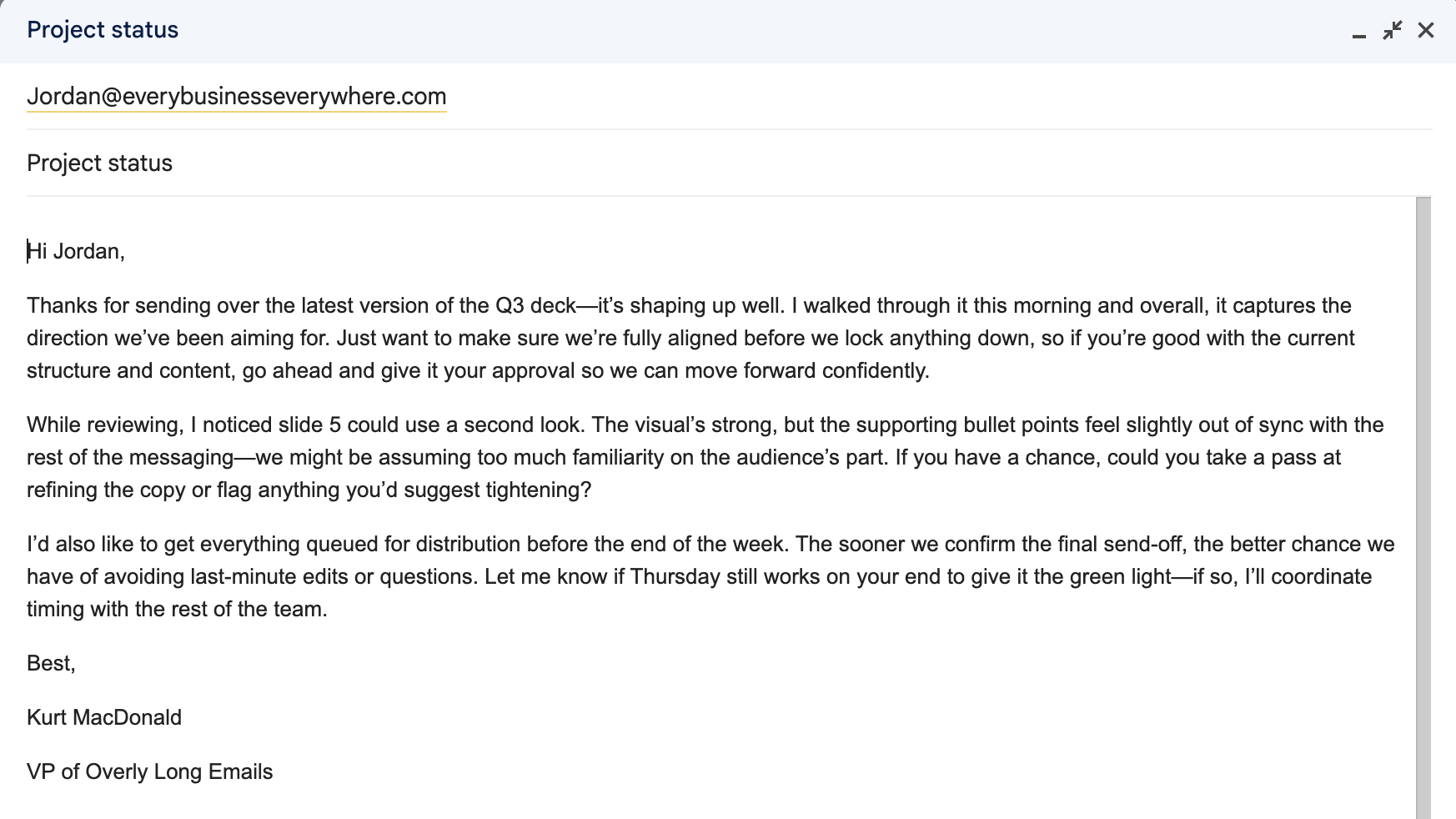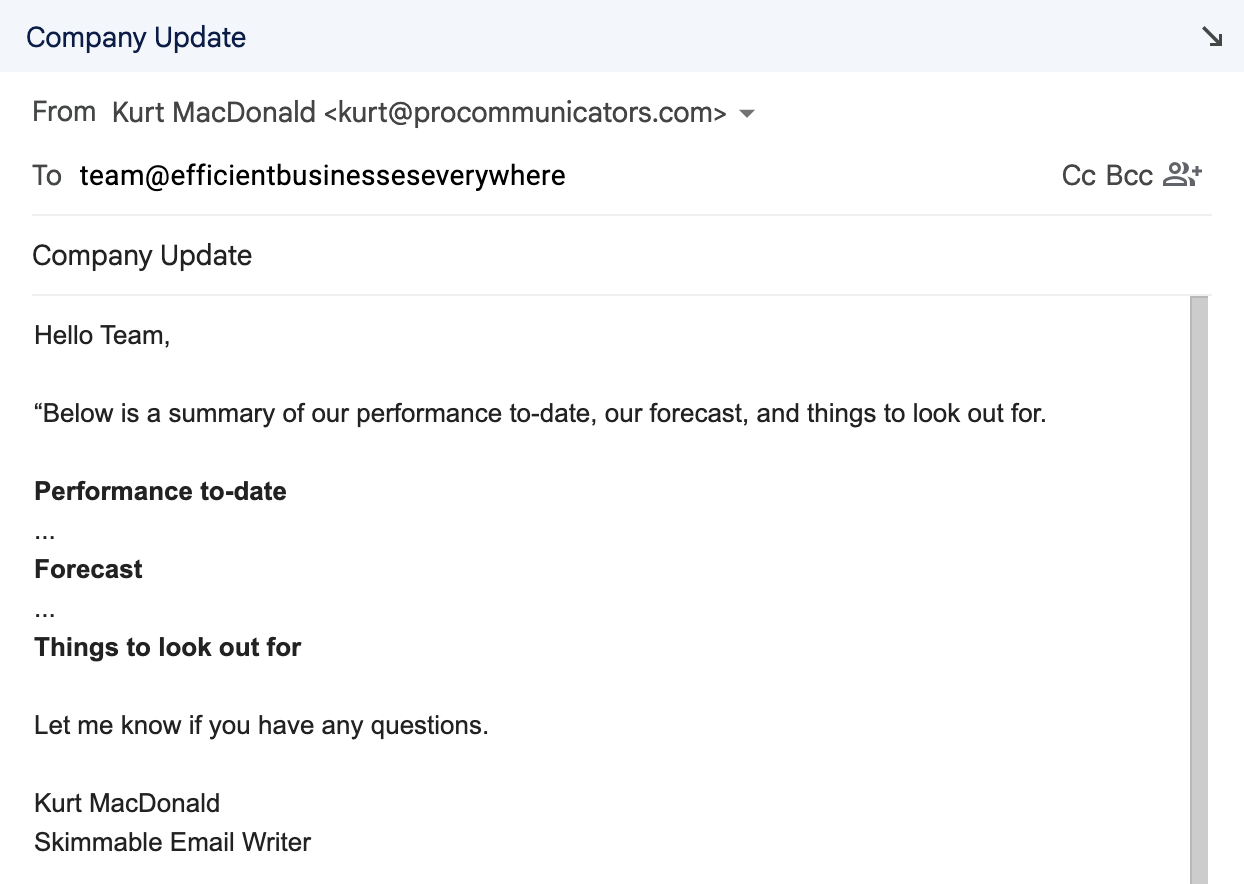Communication Culture: Internal Emails
Let’s play a quick numbers game.
The average manager or director gets around 80–120 emails per day. Assuming 30 seconds to read each one, that’s 40 to 60 minutes spent just scanning emails—not replying, not thinking, just scanning. That’s like watching nearly 2 episodes of The Office every single day… with none of the laughs.
Internal email communication doesn’t have to be this soul-sucking. With just a few simple habits, we can reduce inbox chaos, improve outcomes, and strengthen your office’s communication culture.
Here are four tips to improve your internal email culture:
1. Don’t Just Forward—Frame It
We’ve all been there: you open a forwarded email with zero context and think, "Uh… what do I do with this?"
To avoid this issue, never forward an email without an explanation. Always include at least one sentence explaining what you want the recipient to do with it. And if you say, “nothing,” then ask yourself why you’re forwarding it in the first place.
Example: "Can you review the attached and confirm if we’re aligned before tomorrow?"
This one line saves time, eliminates confusion, and has a better shot at producing the outcome you want.
2. Number the To-Dos
Buried requests are productivity’s worst enemy. Long paragraphs make it easy to miss what you’re actually being asked to do.
Imagine reading 80 emails like this:
To avoid this issue, break down action items into a numbered list.
Example:
Numbering the to-do’s makes tasks pop, reduces back-and-forth, and gets things done faster.
3. Make your Emails Skimmable
The sheer volume of email we receive forces us to be skimmers.
Acknowledge this and make your internal emails easily skimmable.
· Use BOLD for important name and deadlines
· Break up long paragraphs or, better yet, use bullets
· Lead with the “bottom line;” don’t bury it as a concluding sentence.
Including a single sentence that efficiently summarizes the contents of the email, followed by bolded headings, dramatically reduces the “read time” of your emails.
Example:
4. Acknowledge Receipt
If someone sends you something useful, important, or time-sensitive—say something. Silence can be confusing (and mildly stressful).
As a habit for all non-spammy emails, send a reply of receipt. A simple "Got it—thanks!," “Received,” or "Will review and get back to you by Wednesday" is perfect.
You don’t need to write a novel—just let the sender know the message didn’t disappear into the digital void.
We can’t eliminate email, but we can make it a little less painful—and a lot more productive.
So the next time you hit “Send,” “Forward,” or “Reply All,” remember these tips...your colleagues will thank you.



